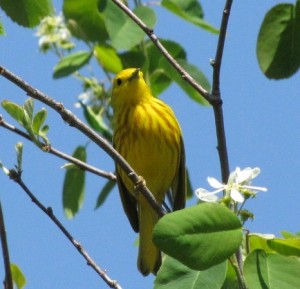In the spring, the pre-migratory state is characterized by a change in neural centers in the lower part of the brain controlling hunger so that the bird gains weight by overeating.
This increased energy income, as much as 40% more than during other times of the year, is stored as large fat deposits under the skin, in flight muscles, and in the abdominal cavity.
Small perching birds like sparrows and warblers gain about 1 to 1.5 g per day, and this increased appetite continues over a period of about two weeks prior to migration.
Furthermore, these birds retain the ability to rapidly gain weight during stopover periods in the course of their migratory journey.These fat stores fuel the aerobic contraction of flight muscles, permitting flights of long duration with minimal fatigue.
Experiments have demonstrated that day length is the environmental stimulus that results in pre-migratory weight gain in early spring. Light not only directly affects the brain’s feeding centers but also stimulates adjacent centers that affect a shift in the bird’s hormonal secretions.
These hormonal changes facilitate the development of fat deposits resulting from the greater food intake caused by increased appetite.
The pre-migratory state is also characterized by increased activity during the night, which is when most bird migration occurs. They become restless, perhaps in anticipation of the migratory flight. This behavior is seldom observed in the wild, but has been carefully evaluated in captive migrants.
The adaptation of migrants to the day length is amazing. Consider the trans-equatorial migrant Bobolink. This species initiates pre-migratory preparation under decreasing day lengths in the southern hemisphere, migrates northward toward the equator, experiencing lengthening day lengths, then crosses the equator and experiences rapidly increasing day length until it finally arrives on its previous year’s territory.
That birds, many plants, and other animals depend upon day length to regulate their annual cycles is not surprising. Of all the variables in the environment, only seasonal day length variation has remained constant since the formation of the planet because of the Earth’s rotation around the Sun.
Birds have also evolved by responding to other stimulus, such as temperature. Thus, when spring is late birds do not arrive too early; similarly, when spring is advanced the birds arrive early to take advantage of the abundant environmental resources.
Non-migratory predators such as the Great-horned owl breed late in the Canadian winter, so that their chicks are old enough to hunt the newly returning birds and their young.



